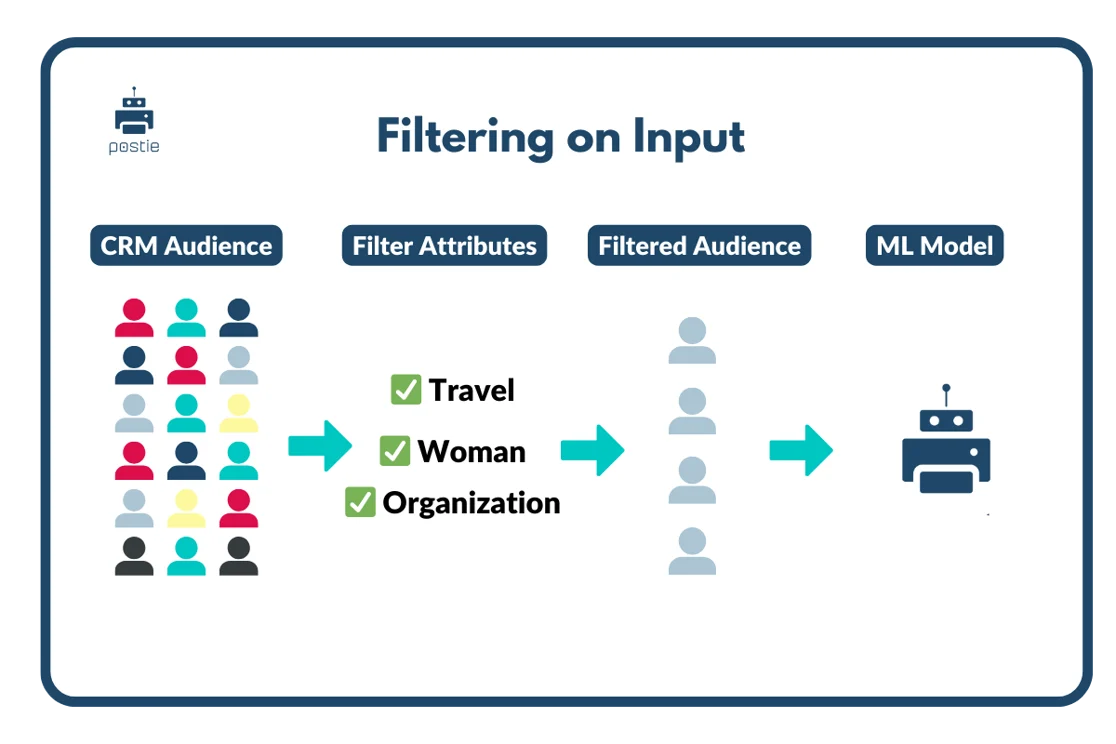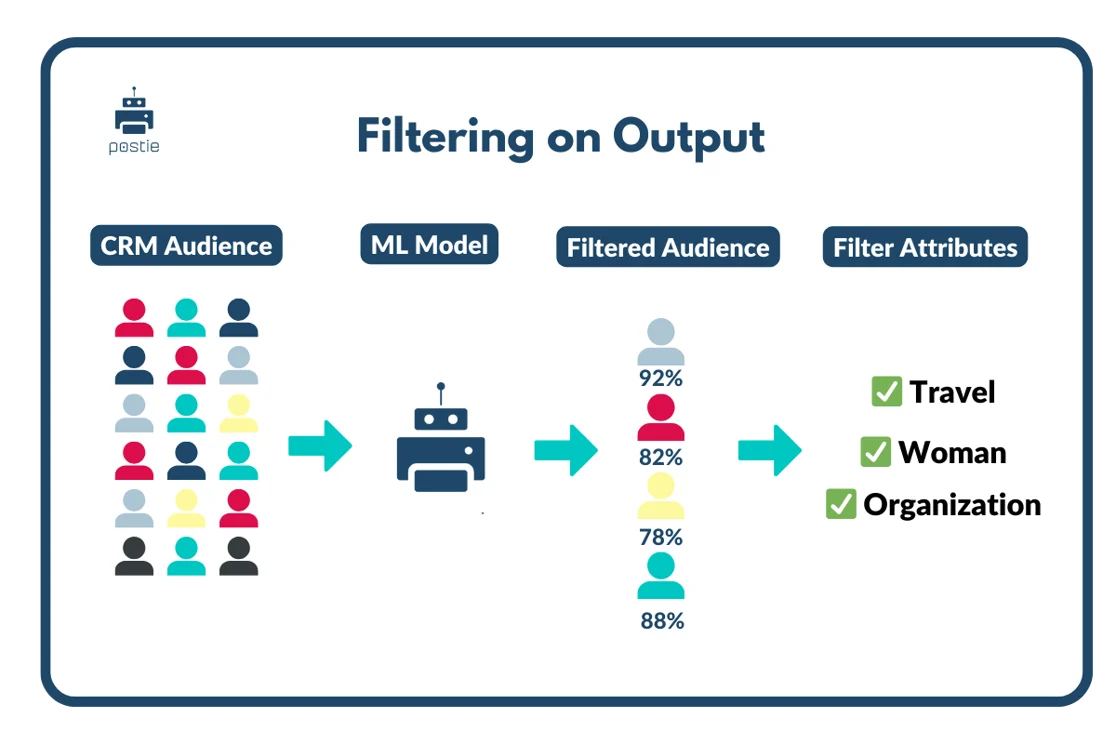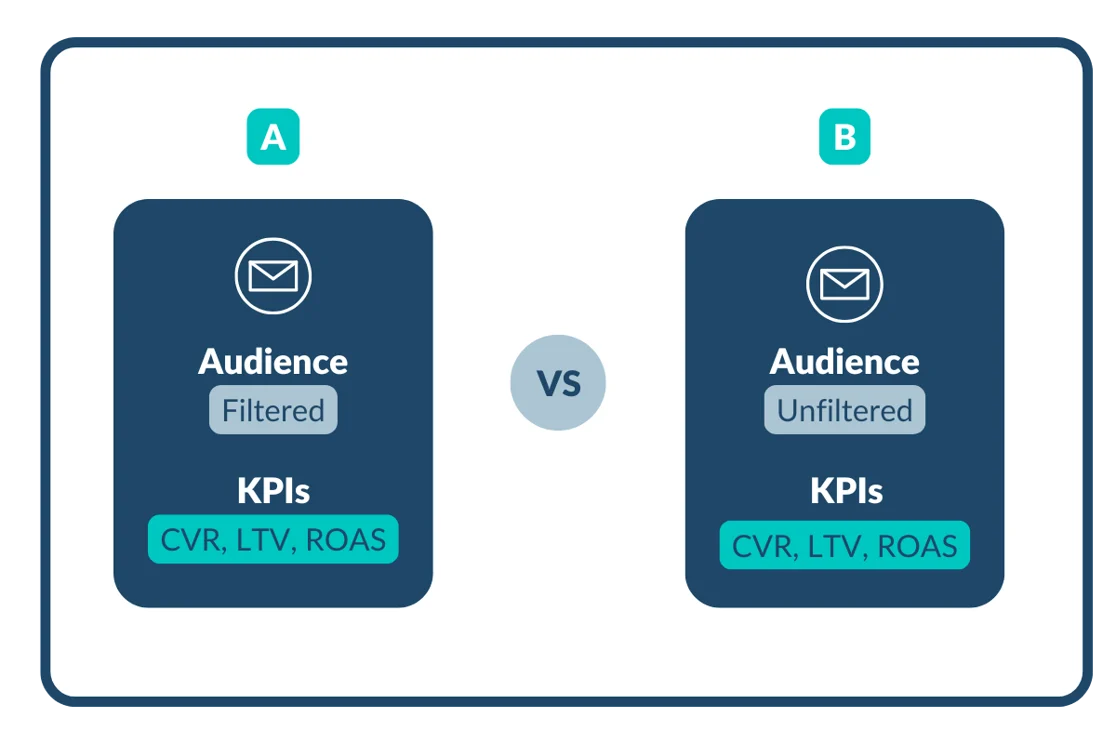When you are creating audiences for your marketing campaigns, should you filter them down based on your ICP criteria? If you choose to filter them, do you do it on the input or the output? Or do you take a more advanced and unconventional approach?
In this blog, we’re talking about the do’s and don’ts of filtering machine learning audience models and why we have adopted our strategy for audience creation.
Let’s get in to it.
Setting the Stage
Let’s say you are savvy marketer working for a luggage brand. You’re building out a new campaign to drive purchases of your products, and you need an audience to target with your campaign.
Now, conventional wisdom would have you believe using a filter-based model to build your audience is an adequate approach.
And let’s be real, it can be. If you’re a smaller brand that doesn’t have the resources to apply more advanced targeting, filters can work.
* Side note: when I say ‘filters,’ I mean audience attributes used to narrow down your targeting criteria to individuals who you believe (foreshadowing?! mayybee) are a good fit for your campaign.
But there is a problem with this approach — so let’s unpack it.

Filtering on Input
Now imagine you’re getting ready to launch a promotional campaign for your luggage brand. Ideally, this isn’t your first campaign you’ve run, and you have some historical conversion data to guide you in this process.
You look back at your past conversion data and see that people who have an interest in travel are a common feature of people who have bought your luggage. Also, you see that many of those people who bought luggage are women, and they like organization.
*Most companies get this kind of information from purchased data sets that are layered on top of a list of prospective clients.
Armed with this data, you open your preferred ads manager and begin curating an audience for your new campaign targeting women with an interest in traveling, that have made other purchases indicating they are organized. Slam dunk, right?! Not quite.
What are some of the pitfalls of this strategy that you can think of?
Here’s a couple that come to mind for me:
- By targeting only women, you are ignoring a VERY large demographic of men who might be potential buyers.
- If you only target people with travel interest signals you’re overlooking individuals who might be developing an interest.
- By narrowing down your targeting to only three audience features, you are ignoring THOUSANDS of other features that can contribute to purchases.
So, how do you know if there are other variables at play for would-be buyers? Well, unless every person who buys your products has the exact same feature makeup, then you can be pretty darn confident, there is more at play.
In essence, this is an incredibly primitive approach to a very complex task of audience targeting, and if you do this, you are probably leaving revenue on the table. But it’s not your fault, you’re a just a human.

Filtering on the Output
Ok so, filtering on the input when creating your audience has some drawbacks. What about filtering on the output? After all, if you feed an ad platform an audience and ask it to find buyers who look like people in that audience and then filter the output based on those key features from above, surely that final audience will be super performant. Right? Sure, the campaign could perform really well, but to the unsavvy this would give a false sense of confidence.
Why? Because there’s no real way of knowing how much revenue you left on the table by filtering that lookalike audience down to the three features from earlier.
So on the one hand, the campaign could be incredibly performant, but on the other, if you could see the amount of revenue left on the table as a result of the filters you applied, you might not feel so cheery about the performance after all.
So what is the way?
I realize that I have served up two options for filtering; many would think the only two possibilities and shot both down. So it’d be reasonable to wonder where the heck i’m going with this. Well, there is actually a third option; don’t filter at all. I know, but hear me out before you scratch the inside of your head with your eyes.
First of all, the idea that marketers can look at every feature associated with a contact, analyze how they all interact, and select a handful of features that accurately predict the individuals with the highest likelihood of conversion is rooted in as much reality as my dream of getting recruited to fly fighter planes with no prior training.
We’re just not humanely capable of doing this at the speeds modern marketing requires. But with machine learning it’s entirely within the realm of possibility.
Let me show you how we approach the model-building process and avoid injecting any bias into our models while optimizing for conversion.
Step 1.
Whether you’re running prospecting campaigns or CRM campaigns, at Postie, audience creation begins with feeding an ML model with data.
The more data, the more accurate predictive capabilities the model will have.
Instead of feeding the model data of only people who have specific feature attributes, feed the model audiences with high lifetime value, among others, and let the model determine the commonalities between the contacts.
Step 2.
Once the model does its thing the deliverable looks like this…

Each contact has a probability score, which is a reflection of their likelihood to purchase.
Obviously the higher the score the higher likelihood of purchase.
If you filtered this audience down based on specific attributes, you would exclude individuals with high conversion probability.

Step 3.
Mail to your modeled audience and review the performance of your campaign.

Now, I’d be lying if I said we’ve never worked with a client that insisted on filtering on a specific feature despite our suggestions otherwise. If this sounds like you, then what we recommend is at least running a test. Generate your preferred filter-based model contacts and mail them, making sure to track the performance and have predefined KPIs. Next, build a list from an ML model with no filters applied and mail then measure that campaign’s performance.
The results will speak for themselves.
Not sold quite yet, take a deep dive into the power of algorithms when building performant direct mail audiences.
